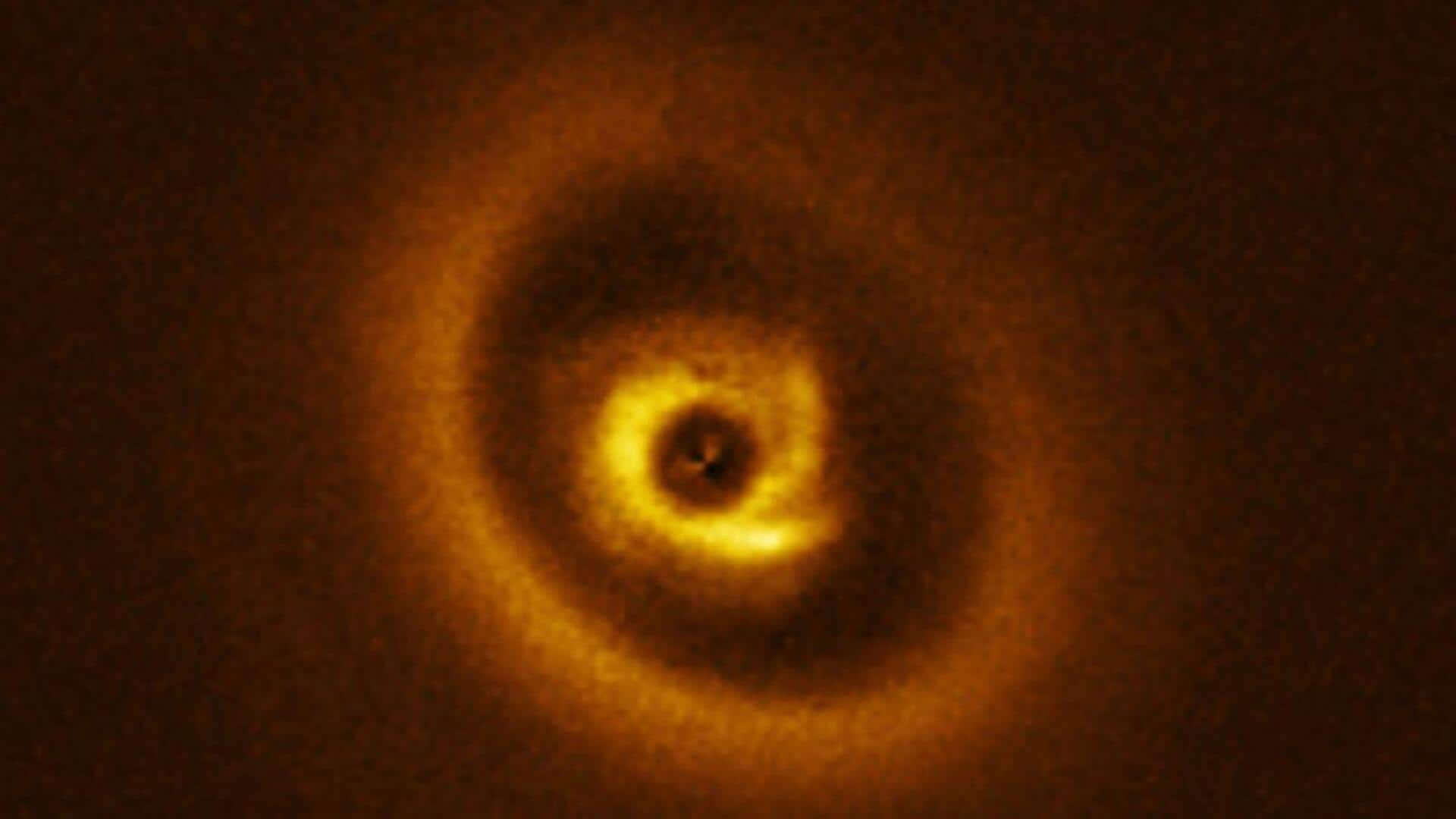
Watch: A gas giant forming around a distant star
What's the story
Astronomers have detected a potential new planet in the process of formation, likely a gas giant. The discovery was made using the European Southern Observatory's Very Large Telescope in Chile. The findings were published in the journal Astronomy & Astrophysics and detail how this massive planetary body is being created around a young star called RIK 113.
Method
How was the picture snapped?
The images of the young star were captured as scattered near-infrared light, revealing a structured disk. The protoplanetary disk is a common sight around younger stars like RIK 113. It is made up of clouds of gas and dust that eventually condense under the star's immense gravitational pressure, forming larger objects called protoplanets. These are the building blocks of new planets.
Properties
About the star RIK 113
The star RIK 113, also known as 2MASSJ16120668-3010270, is located in the constellation Scorpius and is about 431 light-years away from Earth. The protoplanetary disk surrounding this star was first spotted by the Atacama Large Millimeter/submillimeter Array (ALMA) in 2024. Initial observations showed a gap in the clouds around RIK 113, which could be indicative of a planetary embryo forming within it.
Observations
Observations from VLT
To investigate this intriguing discovery, researchers from the University of Galway, Ireland turned to the VLT. They used a specialized instrument called Spectro-Polarimetric High-contrast Exoplanet REsearch (SPHERE) to observe star RIK 113. The team found unique spiral features in the inner ring of the star's protoplanetary disk. They also detected possible signals from two planets orbiting close to RIK 113.
Planetary characteristics
Details about the potential new planet
The newly discovered planet is possibly a gas giant, with several times the mass of Jupiter. The protoplanetary disk was observed extending up to 130au from its parent star, with a bright ring and central gap at about 50au. These features are consistent with theoretical models of how forming planets shape their parent disks.
Steps
What's next?
The astronomers now plan to use the James Webb Space Telescope's sensitivity to capture an actual picture of the young planet. If confirmed, this will allow them to study the planet-disk interaction in detail.